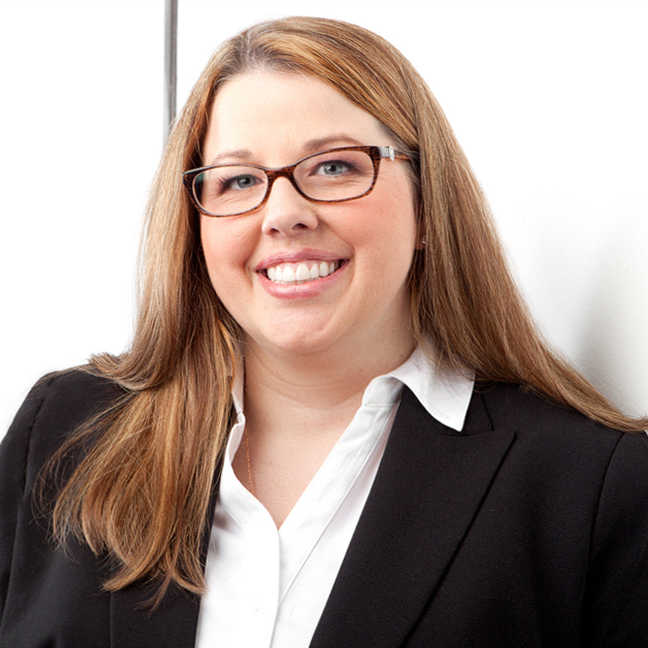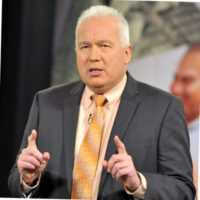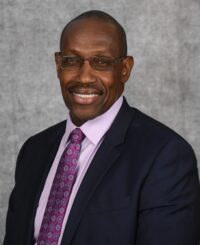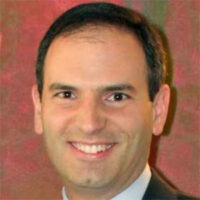Watch
Listen
Receive Updates
Show Sponsors
The discussion is not meant to provide any legal, tax, or investment advice with respect to the purchase of an insurance product. A comprehensive evaluation of a consumer’s needs and financial situation should always occur in order to help determine if an insurance product may be appropriate for each unique situation.
EPISODE TRANSCRIPT:
Paul Tyler:
Summer is almost over. What’s the outlook for the annuity industry as we head back to our virtual offices? Sheryl Moore is the perfect guest to provide us with predictions and savvy forecasts for the rest of the year. She graciously joins us today to talk about changes in carrier ownership, product design changes and regulatory evolution. Also, do you want to get regular updates on news about Sheryl and other guests of our show? Go to thatannuityshow.com and subscribe to our newsletter. We hope you enjoy the show.
Paul Tyler:
SE2 and elders business is a leader in the US life and annuities, insurance technology and services industry. SE2 uniquely combines the maturity and peerless industry knowledge of its 125 plus years of life insurance industry heritage with its end to end digital platform to enable the rapid launch of new and innovative products through existing, as well as digital channels. They also happen to be great partners of Nassau Financial Group, the anchor sponsor for That Annuity Show. SE2 is helping them transform their company for the next generation of service.
Paul Tyler:
We’d also like to thank our sponsor CUNA Mutual Group, built on the principle of people helping people, CUNA Mutual Group is a financially strong insurance investment and financial services company that believes a brighter financial future should be accessible to everyone. Through its company culture, community engagement and products and solutions, the company works to create a more equitable financial system that helps to improve the lives of those they serve and our society. They’ve been also been great collaborators on this show. For more information, visit cmannuities.com.
Paul Tyler:
Finally, we want to thank our primary sponsor and my employer by day, Nassau Financial Group. Our tagline is working harder to be your carrier of choice. We you with best in class service, we seek to keep things simple and we’ll have your back in the years to come. We’re headquartered in Hartford, Connecticut with 27 billion in assets and over half a million policy holders. We’ve been doing this a long time, 170 years, but we remain humble enough to always try to improve.
Intro:
Welcome to That Annuity Show, the podcast that will make you an expert in explaining annuities to your clients. Give us 30 minutes each week and we’ll shave hours from your client presentations. Now here’s your host, Paul Tyler.
Paul Tyler:
Hi, this is Paul Tyler and welcome to another episode of That Annuity Show and we’re rapidly approaching the end of the summer. I tell you, it certainly doesn’t feel like that from the pace activity in the industry, at least our company. But Ramsey, good to see you.
Ramsey Smith:
Always glad to be here.
Paul Tyler:
Excellent. Well, I don’t know. It feels like I’m living in Atlanta here in New York today with the storm weather coming through here. Mark, how are you?
Mark Fitzgerald:
Well, I’m doing great. How are you doing today?
Paul Tyler:
Excellent. Excellent. Ready to sell more annuities here in the next… When everybody gets back from Labor Day with you. So mark, we have a great guest. Do you want to do the honors this time?
Mark Fitzgerald:
Absolutely. And speaking of the ability to be able to sell more annuities, we have none other than the annuity rockstar with us, Sheryl Moore, who’s been on our show a couple times in the past and I think everybody in the industry really knows the work that she does and the research that she provides and appreciates all of her insight in the marketplace. So Sheryl, very, very happy to have you out with us again today.
Sheryl Moore:
Thanks for the warm welcome mark. I appreciate it. And Paul Ramsey, I appreciate you too. Letting me on the show gives me another opportunity to educate people about these products and make sure that people understand how they really work. So thank you. I’m very appreciative.
Paul Tyler:
Oh, thank you. Yeah. And I don’t know, Ramsey, do you want to lead off?
Ramsey Smith:
Sure. So first thing I want to say is Sheryl, it’s just great to have you on the show. So the key thing about the show is we’re lucky enough we provide a platform and we’re lucky enough that great voices like yours come on. So you are doing us a service here. Thank you. Thank you very much for that. So look, you have the benefit of, of seeing so much of this industry, you have a fantastic network, you have unparalleled data and so that there’s a level of access that you have that many of us don’t. So we’re hoping to sort of tap into some of that today and hear your thoughts on so many things that are going on.
Ramsey Smith:
So one of the things that we talked about just prior to the show was what’s happening in terms of the change in ownership structure in the industry. So we’re seeing some movement away from traditional stockholder companies. For example, we’re seeing a greater footprint for private equity companies. What are you seeing? What do you think are some of the pros and cons there for the industry going forward?
Sheryl Moore:
Well, I got to be honest with you Ramsey. This is a scary time for me because I’m seeing so many companies getting out of the annuity market and out of the life insurance market too. And just to help benefit our audience, I’ll give a simple example of why this is. So when I got started in this industry about 23 years ago, the insurance company that I worked for had fixed annuities that had minimum guaranteed interest rates of 5% and they were crediting double digit interest rates at that time. Now, since then, the double digit interest rates have come down just because the investments have required that. But if you’re an insurance company that has a block of annuities on their books that’s paying a 5% minimum guaranteed interest rate, But the 10 year treasury, I think when I looked at it this morning was at 1.26%, do you really want to be taking a loss of almost 4% on that business?
Sheryl Moore:
Now take into account the structure of a stock held company and ask yourself do your stockholders want that? Are they comfortable with the idea of you losing money on this huge block of business? So we’re seeing insurance companies shed those in force blocks of business and sell them off. Private equity firms often have the ability to achieve higher returns on their investments because of their expertise. So we are seeing some more PE come into the business, but quite honestly, I’m scared because when we see less companies, that means less choices and less competitiveness as well.
Paul Tyler:
Well, and Sheryl, do you think that the timing is driven by the nature of the capital or do you think just to continue where you were headed, is it really a matter of timing like who owned the companies and blocks of businesses that were issued 10 years ago in a totally different marketplace and really the only option is to exit and let somebody else sort of manage the block from here?
Sheryl Moore:
I think it’s really a perfect storm of the market environment. I mean, we have so many investment companies that are not able to achieve of same returns that they used to be able to more than a decade ago, certainly before 2008 when the market collapsed. But we also have these historical low interest rates on safe money instruments, general accounts are not kicking off a lot of interest for insurance companies. And that spells opportunity for a lot of these bigger investment firms that think that they can get in here and create a higher return and create some value. So I also think that a lot of insurance companies are just getting to the point where it’s like we’ve been hoping it’s going to be get better, we’ve been hoping it’s going to get better and things are not improving.
Sheryl Moore:
And especially when you look at come countries like Japan where they’ve been in a negative interest rate environment for years. So looking at that as a potential for the future for us, a lot of stock held insurance companies are just saying we can’t do it anymore. There’s got to be another solution. And if you’ve got a bunch of investment firms that are saying woowoo over here, we’re interested in buying, it’s really a unique and symbiotic relationship that’s occurring, but market environment is really what’s driving it in my opinion.
Mark Fitzgerald:
How much play do you think demand is coming into it as well? So if you look at the demographic out there and more and more folks going to retirement, obviously the demand for these products is increasing. You think that’s going to bring a lot more private equity in looking to wire or start up even?
Sheryl Moore:
Well. I’ll tell you where I see more of that, Mark. Right now, one of the biggest trends in the indexed annuity market and starting to creep into the structured annuity market is what I call hybrid indexes. These are often proprietary, sometimes bespoke or created specifically for the annuity, often volatility controlled, but I call these hybrid indexes because they usually are multi acid indexes which are created from one or more other indexes and then have a cash or a bond component in them. And the reason these are popular is because these are usually brand new indexes without a lot of history and so the option pricing is favorable and we’re seeing a lot of investment banks that are sponsoring those indexes or creating those indexes and certainly companies that have private equity ownership have been able to achieve some economies of scale with those hybrid indexes because of their investment arms and what they can kick off in terms of returns.
Sheryl Moore:
So I tend to see a correlation between private equity backed companies and those hybrid indexes being more popular. But I’ll say that’s a trend that’s affecting the entire index annuity industry as a whole and creeping into the structured annuity market.
Paul Tyler:
So Sheryl, if I’m an independent agent, how should I feel about private equity firms? Should I be worried?
Sheryl Moore:
Paul, I think it’s basically like any other insurance company. I mean, personally speaking, I don’t like to say who I do business with, but I have business with companies who have private equity backing and I have one of them who does a fantastic job. And in fact, I’ve owned business with them since before pro private equity firm bought them and I’ve never had problem with them. And everything has been run since they were bought by the PE firm like it was prior to the PE firm buying them out. So that said, I also have some business with a company that I used to work for who is now owned by private equity and they lost my annuity at one point, so. And let me tell you that was a really interesting conversation when they were trying to convince me I’m an old lady and I don’t know what I’m talking about because I don’t own an annuity with them.
Sheryl Moore:
So I would just say it’s just like choosing any company. Doesn’t really have to do with the private equity backing. There are good companies and there are bad companies. I think if you’re an independent agent, the best thing you can do is really network with other agents and ask them hey, I’m considering getting appointed with this new company that I don’t previously have a contract with. What’s your experience with them? How have they treated you? How have they treated your clients? What has been your experience with them crediting rates on the in force business that exists with that company? So really independent agents have to advocate for themselves today and this is no exception to that.
Mark Fitzgerald:
So how about going back to the bespoke indices that you were talking about a moment ago, I mean, in the last four or five years, they really exploded in the marketplace, really hitting broad bases of product lines out there. Do you think that those will continue to evolve, develop, go into more and more products out there?
Sheryl Moore:
Yeah. When they first came out, I was telling everybody, this is a fad, this is a trend. It’s going to go away as soon as the market comes back and the 10 year treasury is up to a reasonable level because the way that our businesses is very cyclical and the index annuity market has shown in the past. You remember when we had like 145 different ways of crediting interest on an indexed annuity? I remember at one point, I’m not going to name the carrier, but they start with an A, and they really needed visual aids to help describe how their indexing method work. And I’m like ugh, come on guys, it shouldn’t be that hard. I mean, we need to keep this story simple.
Sheryl Moore:
Well, eventually everything went back to the S&5 500 annual point to point with a cap because that’s what’s most simple in our market in terms of indexing. So that’s where I was projecting things will go and I’ll still stand next to my prediction. It is going to go back that way. It’s just going to be a lot longer time before we see that, Mark. So for anybody who’s saying I don’t understand these and I’m just sticking to my S&P 500 or my Dow Jones Industrial, I’m going to say, this is going to be a trend that’s here to save for quite a long while. And if you start to see the 10 treasury ticking up in a meaningful and significant way, we may see less of it, but keep it real, Mark. I mean, when you have your insurance company’s name associated with a product like an annuity that most people have never heard of, but then you can get a big popular brand name stamp of approval from a giant investment bank that almost all Americans have heard of, what seems bad about that from the insurance company standpoint?
Paul Tyler:
Yeah. Well, look, let’s talk about one other market and markets seem to just be going up and up and up, right? I think that certainly is going to fuel the indices. Same time, we talked about this before the show, Sheryl, there’s a lot of inflation. Go out for dinner, it’s gone up. Go out, try to do any home pair, prices have gone up. Question one, is this permanent, right? Or is this a short term effect in your estimation two. How’s our industry going to respond to it because if you’re living on a fixed income, what do you do in a situation like this and can we deliver products that actually help cushion what may be a longer term event we’ve got to prepare people for?
Sheryl Moore:
Well, I’m not an economist, but I did take econ, several different econ classes in. And so I can tell you this is cyclical too. I mean, we’re going to have an end to interface eventually in regards to your question out? Can we get the message out? Can we help more people? Man, we’ve been really crappy at that. I mean, telling the annuity story and educating people on what annuities not and then what they really are instead of what they think they are, I mean, I’d love to see a concerted effort from the whole industry to band together and just have this big campaign. But even the trade groups that we have that are supposed to be doing that in my estimation are still falling short of what I’d like to see. So there’s never been a better time to be selling annuities, but does that mean that you’re going to get a receptive response to your message? Not anymore today than a year ago, but I am grateful for this secure act.
Sheryl Moore:
Now people aren’t necessarily really excited because they’re going to be able to have annuities in their 401ks, but one really great positive effect of secure is that it has resulted in more annuity educational content in the public domain, in the newspapers and the trade journals like Wall Street Journal and New York Times. So at least it’s saying the word annuity and people are like whoa, well, if the Wall Street Journal is bringing up annuities, maybe I should look into that. What is that?
Sheryl Moore:
But can we address those needs for people with fixed incomes who are suddenly having to do more with less? We can, because I’ve seen the product innovation already kind of transition to help with that. So we have income writers that have increasing income features. We have income writers that offer more income if you’re taking income right away in the early years than in the later years. There’s so many different features that I’ve seen over the past five years that have really been targeted to help people in that situation. So I’d say the positive thing is that we have really outside the box thinkers and very creative people and product development in this industry. I would just say that from a communication standpoint, we’ve still got a lot of work to do.
Ramsey Smith:
So you mentioned the secure act and we used to talk about the secure act and awful lot on the show, maybe like a year and a half or so ago. It virtually has not come up in a while, which is too bad because everything that it has to offer is still there.
Sheryl Moore:
Right.
Ramsey Smith:
It just sort of has moved down, moved out of focus, but I’m glad you brought it up because you know, there’s two parts to the puzzle, right? One is that the there’s the legislative support for it. And then you actually have to have 401k providers and HR departments kind of all over the country actually making the products available on their platform. And so I’m curious if you’re seeing any of that, because sooner or later, to make those decisions, they’re going to need data? And I imagine when you start getting those calls, that’s probably a good sign that things are heading in the right direction. So curious to find out what you’re seeing so far.
Sheryl Moore:
I would counter Ramsey that there’s actually a third arm that we need to take into consideration. And that’s the product manufacturers. And I say that just because for example, so many people got excited about fee based annuities and it’s like woo, we have this new type of annuity that we’ve never had before in the fixed insurance market. And hopefully this new distribution will embrace these annuities and that really didn’t happen. And it’s because we need to tell that, we need to do a better job telling the annuity story. I would say, likewise, for the secure act we need to see sales happening or insurance companies aren’t going to be developing these products.
Sheryl Moore:
Now we do have a few companies who have already developed implant annuities and certainly Wink is looking to track that data once we have a significant amount of data to be tracking. But what’s interesting is you do have to wait on all of that administrative groundwork to be laid and you do have to wait for the sales to start coming in. So it’s kind of like this hamster wheel, right? And we’re not seeing that yet. But as I said, when secure first passed, whoa, hey guys, temperate. Don’t get too excited. We have a lot of groundwork we’ve got to do before this is actually going to go off without a hitch. And I would say, just dealing with the requirements for RISA, from an insurance company standpoint is a huge lift. And you have to take that into consideration with all these other priorities that you guys have been talking about on the show.
Paul Tyler:
Yeah. So, okay. Ramsey, you opened the door so regulation. Okay? So secure act.
Ramsey:
That’s what I do, Paul
Paul Tyler:
Best interest and now DOL. So what’s in store here?
Sheryl Moore:
So when the DOL first proposed the fiduciary rule, I kind of felt that little bit of anxiety in my heart again because I remember all those late nights and hard work that I did on 151a from a grassroots legislation standpoint. And I was like oh man I’m not ready to go through this again. But now that we’re so far out from that date, I’m really to the point where I’m like it’s okay, because if there’s one thing that our industry has proven over the past 23 years that I’ve been doing this it’s that we’re resilient. We can handle challenges, but we continue to swing with the punches and figure it out and thrive. Annuity sales have continued to increase despite all of those things. We might have hiccups here and there, but like I said, more people are living longer and have the need for guaranteed income for the rest of their life lives than we’ve ever had before and more people are hearing that story than they ever had before.
Sheryl Moore:
So those sales are ultimately going to come through. We’ll have some interruptions, some distractions to prepare for some of this DOL business, but eventually we’ll get back to normal and we’ll do even better than we did before. I’m optimistic. And for the people who are saying oh no, I might have to disclose my commission, I think most Americans are pretty reasonable. I mean, Mark, are you aware of the fact that the last time you bought a car that the salesperson got paid a commission when you bought it?
Mark Fitzgerald:
I think everybody has to realize to some extent there’s profit in any sale that goes on out there. Right?
Sheryl Moore:
Yeah. And you felt okay about it, right?
Mark Fitzgerald:
Absolutely.
Sheryl Moore:
Yeah. I mean, Paul, when you bought your last home, didn’t you realize the real estate agent got paid a commission and you felt all right about it?
Paul Tyler:
Yeah. There’s something about commission. It’s interesting, commission and financial services are just, it has this energy and the media and conversations they have with people. No, Sheryl I’ve had the same thing where I had, well, share a story. A good friend of mine who’s a oral surgeon said he is going to buy some survivorship life insurance. He said Paul, but you believe the commission is going to be like $6,000 or something on this? I said, well, how much did it… If I go to an orthodontist and put get my kids’ teeth, get them in braces, how much did the wire cost? She said you can’t compare that. I’m like but it is.
Sheryl Moore:
Yeah.
Paul Tyler:
People need to make money. People have to make a living. Would it feel reasonable for, if somebody comes out to your house, a plumber shows up in my house, they cross, the minute they walk in the door, I’ve got a bill for $300. Right? So how much are you willing to pay for somebody to actually think about your future, your family’s future and protection? I think you’d probably pay a lot more than what you’d be paying if you actually saw what they’re making.
Sheryl Moore:
So you’ve probably noticed I have some ink on me. I like to tout that I am insurance because I don’t fit the typical stereotype of the older white guys that represent this industry unfortunately. No offense, white guys.
Paul Tyler:
None taken.
Sheryl Moore:
But I like to compare it to tattoos, right? Because I go into my tattoo artist and let’s say he charges me $150 an hour. There are a lot of people who’d be like whoa, $150 an hour, that’s crazy. I’m not going to pay that. Well, you know what? This is going to be on me until the day I die and then some. I’m paying for it one time. Do I think it’s worth more than $150 an hour? I do. So what do you think peace of mind for getting a paycheck every month for the rest of your life is worth? I mean, you’re paying that commission one time, but how much is that piece of mind worth? And we’ve all seen the research on how people who own annuities have happier retirements, live longer, are able to spend without having anxiety. So Ramsey, what was that statement that you made just before our call? I thought it was brilliant.
Ramsey Smith:
Wow. I’m trying to remember.
Paul Tyler:
I think there were a lot of statements. [crosstalk 00:24:23]
Sheryl Moore:
… price worth or something like that.
Ramsey Smith:
Oh. Oh yeah, yeah, yeah. Yes, of course. So yeah, one of my frustrations and I’m a capital markets person by training, right? So I always think about things in terms of fair value. And what’s interesting to me is that people react so viscerally to sometimes discussions of annuities. They do it without really having sort of a benchmark for where quote unquote fair value would be. So you could go to you go to two advisors, right? And you could give one of them something priced below fair value, meaning you’re actually buying, you’re paying less for it than it’s worth meaningful. Meaningfully, you can do the same thing with another advisor and give them something that was priced at fair value or might has some commission in it.
Ramsey Smith:
And my belief is you’d probably get more or less the same response from both of them, right? Because they don’t really… They’re reacting to sort of a perception as opposed to having the ability to actually calculate what the true value is. And to be fair, the true value is actually is not a simple thing to determine for a lot of reasons, but I think that’s what sort of frustrates me is that people react without really understanding where value is. And going back to your point about the value of peace of mind, I think that there’s very little understanding about just how valuable and unusual a true guarantee is.
Ramsey Smith:
So when you talk to people, we talk to people that are advisors and put people into the stock market and they make a lot of money in the stock market. I think that’s great, you give people the peace of the peace of mind to actually take the risk, but ultimately, it was client who took the risk that really earned those access returns because they took the risk. The person that told them to do it didn’t take any risk. Right? So the life insurance industry actually takes on a lot of risk in order to relieve clients of that risk. And I think that that is undervalued. I think that’s service is undervalued and that’s something that’s always frustrated me a little bit. So a long winded answer to your question.
Sheryl Moore:
No, I loved it because it actually brings up another issue for me that I think is really important. A lot of people look at annuities as an investment alternative. So they’re comparing it to bonds and stock fund and saying well, I can do the same thing and it’ll cost less money or it won’t have surrender charges. And it’s like hold on guys, you’re losing one important fact. This is insurance. This is guaranteed lifetime income. Can you do that with your bond and your fund? No. And so I think that you have to make sure you understand what the annuity is before you make that statement and it’s intangible. How do you put a dollar amount on that? I absolutely agree with you.
Paul Tyler:
Yeah. Sheryl, how do you think the combination of best interest standards in DOL will change the relationship between the carrier and the agent? Now, go back to the example you told us where the company lost your annuity. Why as insurance agent do I put… I probably represent 10, 15 carriers. I probably put most of my business with five, line share with one. The one I recommending to you is one where I know that if it gets lost, I can pick up the phone, call the vice president of something and they pick up my phone. They solve the question for you quickly. Now, going forward, is this all going to be spreadsheet? And I’m looking at the sharpest right at the sharpest time. Forget about the relationships, forget about the ability to go and fix things if things, God forbid, go wrong.
Sheryl Moore:
I’m scared that it will get to that point, Paul, because the people outside of our industry are going to think that is the answer, right? Because they don’t understand that sometimes some companies lose your annuities. I have life insurance with a company who suspended my policy and I didn’t get premium notices or annual statements for over four years. So it’s like I don’t think those people understand our business much less those things that can happen. And really, you need to take those things into consideration because the company that put those policies in a suspended status for four or five years, they had the most competitive life insurance product in the entire industry.
Sheryl Moore:
And so spreadsheeting in that situation put me in a really precarious situation. And in fact, one of my employees owns business with that company and was supposed to get a call from them two days ago and is still waiting. So what’s the value of that, Paul? How do I put a dollar amount on that? How do I spreadsheet that? I hope that doesn’t happen. But the other thing is, I will tell you that I largely believe our independent agents don’t even realize that they shouldn’t be spreadsheeting, that those things should matter.
Mark Fitzgerald:
Do you think it’ll ever revert back to, I guess in general less because the dynamic of spreadsheeting is definitely broadened, right? It started off with the income riders, now it’s looking at all the different indices and spreadsheeting them on a weekly basis. It seems like looking at the back casting on it. You think that will ever revert back where that’s going back to the fundamentals of a product structure?
Sheryl Moore:
Mark, that’s a really good question, but I’m very pessimistic about that because the independent agent distribution is about competitiveness and competition fuels innovation. And spreadsheeting, really it’s about that. And I would say even back in ’98, ’99, when I started in this business, insurance agent sees what actually spreadsheets migrates. Does anybody remember that? You’d have the Excel spreadsheet that got PDFed and it’d have hot annuity rates and list maybe the company’s rating and the surrender charge and the withdrawal provisions and the rate. So at least they recognize at that point, it’s not all about rate. There are other things you’ve got to take into consideration, but we’ve complicated this product. We really have, especially with adding income riders.
Sheryl Moore:
And so the easiest way to sell anything is to mention a rate, right? I mean, CDs are sold on rate, [inaudible 00:30:59] are sold on rate. Man, do you really want to have to explain that benefit based value compared to that account value and how you can’t access the one, but you can the other? Probably not, but you could talk about the 7% roll up or the 5% of the benefit base you’re going to get for the rest of your life. So I don’t want to make it sound negative. It’s the easy way to sell. Does that make sense?
Mark Fitzgerald:
Yeah. I guess. And the challenge I think is with when you had a standardized indice, let’s the S&P, right, and you had a standardized measuring point of participation rate or cap, pretty easy to spreadsheet. Who’s got the best power rate? Who’s got the best cap? With the bespoke indices, obviously there’s a lot of different variable components to it. How do you think the best way for an agent to really grasp and understand the differences between all of those is in terms of making their selection process?
Sheryl Moore:
So I’ll just say when I benchmark products, I go through two part process. Really I want to see the product features not withstanding the indexing. So what’s the company ratings? What are the surrender charges? Is there a market value adjustment or not? What’s the commission on the product? But then I want to go into a second level of benchmarking and look at the indexing. Now, two year point mark, there are 126 different indexes that are bespoke or hybrid indexes today. That doesn’t even include the gold commodity, the S&P 500, the Dow Jones Industrial Average, the Russell 2000. So there are so many choices today. How do you even benchmark those? I would say the best way to do it if you really are dead set on doing it is don’t compare a product with a participation rate to a product with cap rate.
Sheryl Moore:
I mean, you have to make sure you’re using the right moving part and grouping them together from that standpoint. But I’m going to tell you if you are comparing the price of rice in China index to the S&P 500, that’s not a fair comparison because the Price of Rice in China index was created less than a year ago and the S&P 500 is what? Like 75 years old. Does that sound right? I mean, so it’s not a fair comparison just because we don’t have experience for the option seller to rely on on a lot of these bespoke hybrid indexes. And here’s how I’ve seen that make a difference and where insurance agents should pay attention.
Sheryl Moore:
So one big company who I’m not going to name had a cute little acronym for their hybrid index because they had a super long name like most of them do. And an initially when it came out, it had 100% participation rate, no cap rate, no spread rate. Who couldn’t sell that? I mean, hey, I’m on it like blue Bon. I’ll sell that all day long. You get all the markets gains, not subject to a limit. But what happened was the option seller saw some experience coming in on that index all of a sudden before you know it, it’s like oh, we’ve got to add a 1% spread rate to that product. I’m sorry guys.
Sheryl Moore:
And as the market environment continued to get more and more challenging, that 1% spread rate went up to two and three and four and five and then finally 6%. And then the product manufacturer is like wait a minute, we signed this exclusive deal with this big investment bank to be the only ones who get to use this special index that was made just for us until XYZ year and now they’ve got us locked into this 6% spread. What were we thinking?
Sheryl Moore:
And so what they did was they worked with the investment bank to reprice the index and change the components around so there was different ratings on the bond index maybe before the bond index or the bond part of the index only took up 10% waiting and the stock index is accounted for the other 90%, but now that we’ve retooled it, the bond index takes up 90% of the constituents on the index and stock part, or the equity is only 10%, but the participation rate is 100%, the cap rate is nonexistent and the spread rate is nonexistent. Is that the same annuity? Is that the same index? I don’t think our insurance agents know. Do you guys think so?
Ramsey Smith:
So I can tell you, so first of all, good getting back to the hybrid industry. So I can say that I’m responsible for a few of those, so full disclosure, right? In my prior business. To answer your question, no, that’s a different index. I mean, mean, there may be some similarities in the calculation methodology, but if you change the weightings, that drastically then it essentially becomes a different index. And so, I mean, that’s one of the challenges. Again, I used to sell those indices and I believed in what I saw and still do in the indices that I was focused on. But at the same time, there’s just so many of them and it is. I remember when there was one way back when in 2012 and now there’s 126. So it’s not an easy thing to sort of figure out how to evaluate that many indices because they are complex and I can see why it would be a challenge for an agent who’s not necessarily of a capital markets background to be able to navigate those.
Sheryl Moore:
Don’t get me wrong. I don’t think they’re a bad thing. I don’t. I just think that you need to do a little bit of research on them because they’re so brand new and certainly what I am suggesting is don’t just say because the S&P 500 has a cap of 4.5% that this hybrid bespoke index that has no cap but a participation rate of 55% is going to outperform it because that’s not necessarily true.
Paul Tyler:
Yeah. Yeah.
Ramsey:
Well, that’s where marketing comes in. There’s a lot of marketing there.
Sheryl Moore:
You bet.
Paul Tyler:
Yeah. It’s how to make complex things simple, right?> That’s our career/.
Sheryl Moore:
Right.
Paul Tyler:
Wait, well, Sheryl, this has been great. We’re sort of at the top of the half hour here. I don’t know, Mark, final thoughts, questions for Sheryl?
Mark:
Yeah. I guess kind of a sneak peek, what do you see kind of Q3 ending up and Q4 coming into play given everything that’s going on right now?
Sheryl Moore:
Well, we’re getting into conference season here and from what I’m hearing from everybody, they’re looking forward to actually going face to face at some of these conferences. That’s going to have an impact on sales in itself just from people being out of the office. But we talk about the Delta variant coming up on COVID 19, that’s going to have a negative effect. Certainly the S&P 500 is at the highest point that I’ve ever seen it and anytime the market’s headed up, we actually tend to see money flow away from them fixed insurance products and over to variable or securities products like structured annuities or VAs. And so that’s going to affect the fixed side of the business.
Sheryl Moore:
But the other thing we can’t dismiss is that the 10 year treasury is at 1.26 guys, and that’s not really conducive to [inaudible 00:38:17] sales or fixed annuity sales or even really indexed annuity sales. So I would say as a whole, looking forward. Sales are still going to be down. They’re going to be up from this time last year just because it was a crummy time, but they’re going to be down. It’s going to take a while for us to rebound.
Paul Tyler:
Yeah. Ramsey?
Ramsey:
So I share your concern about the outlook for interest rates in the coming years. On the inflation side, I do think inflation will be an issue for the next year or two, I think we’ll sort of settle back in and that will also sort of create that additional gravitational pulling rates down the road. Yeah. I just hope that… I hope that despite all that we find different ways to sort of leverage the connectivity insurance companies have to the needs of clients, right? So sometimes there are other services provided that aren’t necessarily as balance sheet intensive. So there’s maybe room for exploration there. And I have high hopes for what the secure act will bring with in plan annuities, so, and as I said earlier, I think that you are going to be part of that, Sheryl. Full confidence. And as that grows you to be a factor. So we look forward to seeing that.
Sheryl Moore:
Thanks Ramsey.
Paul Tyler:
Yeah. This is great. Well, Sheryl, first of all, we love annuities and we love you. So hey, thanks for sharing your time. Yeah. Listen, thanks for sharing your time, your wisdom and expertise. We love it. We love your LinkedIn posts. These are great. It’s like Sheryl, I’m actually getting alerts now. Sheryl Moore post. Okay, go Sheryl. So anyway, hey listen, thanks for all you’re doing. Thanks for coming on here and look forward to having you come back. I’m sure this fall we’ll have some interesting topics where we love to get you on and get your discussion, either your opinion or get you to help discuss with some of other friends in the, in the industry. So thank you.
Sheryl Moore:
Well, I would always love to come back on so say the word and I’m back fellas. Thanks so much for having me.
Paul Tyler:
Okay.
Mark Fitzgerald:
Awesome.
Paul Tyler:
Excellent. Hey, thank you Sheryl. We’ll put links in the show notes to your site and thank you for all the research you’re providing us as well as a customer of yours and all of you listeners, listen, stay tuned and tune in next week for another episode of The Annuity Show. And if you’ve got questions for Sheryl, you know where to find her. Thanks. Thanks so much.
Outro:
Thanks for listening. If you’ve enjoyed the show, please rate and recommend us on iTunes, Stitcher, Overcast or whatever you, you get your podcast. You can also get more information at thatannuityshow.com.
 That Annuity Show
That Annuity Show
























Recent Comments